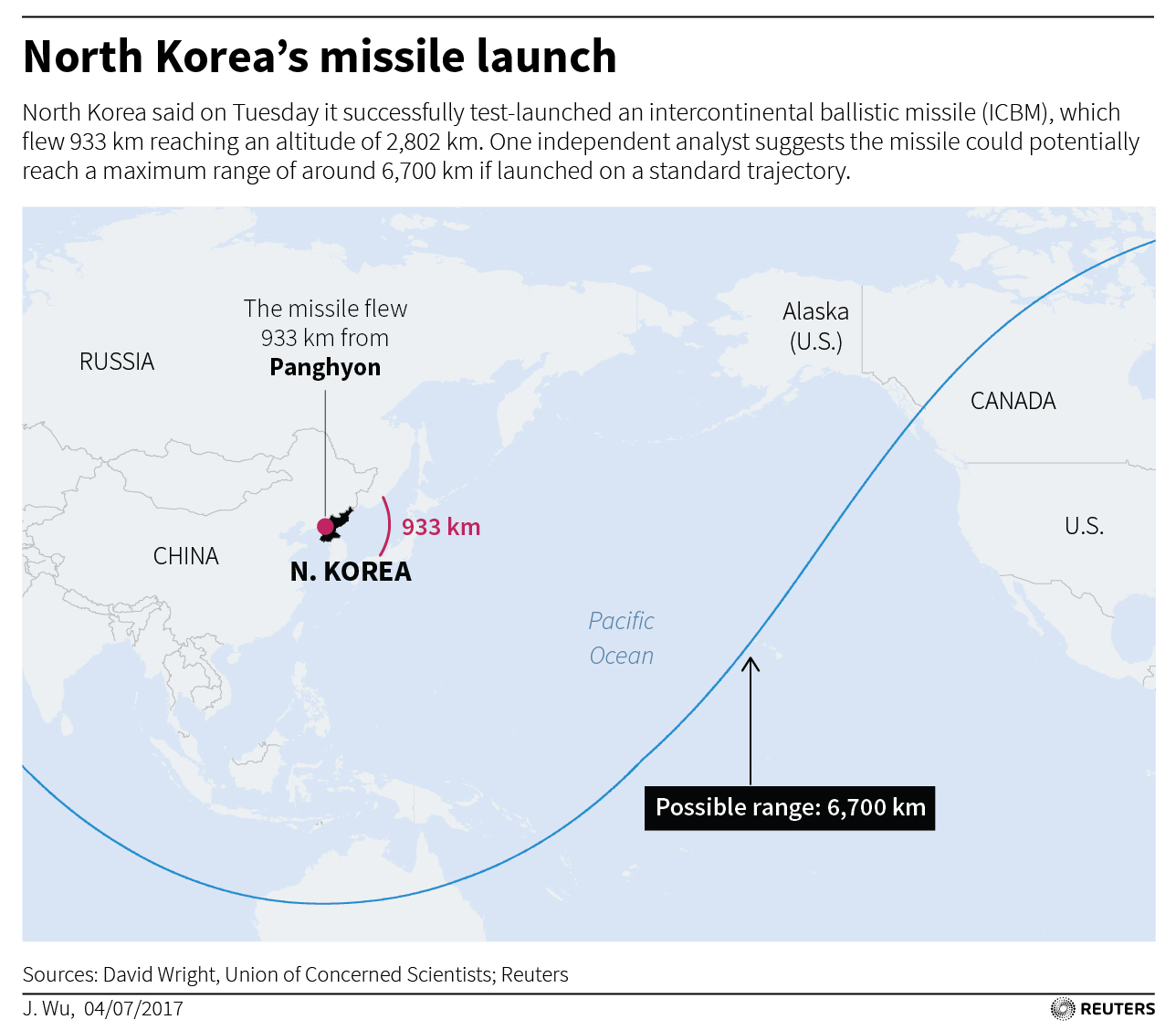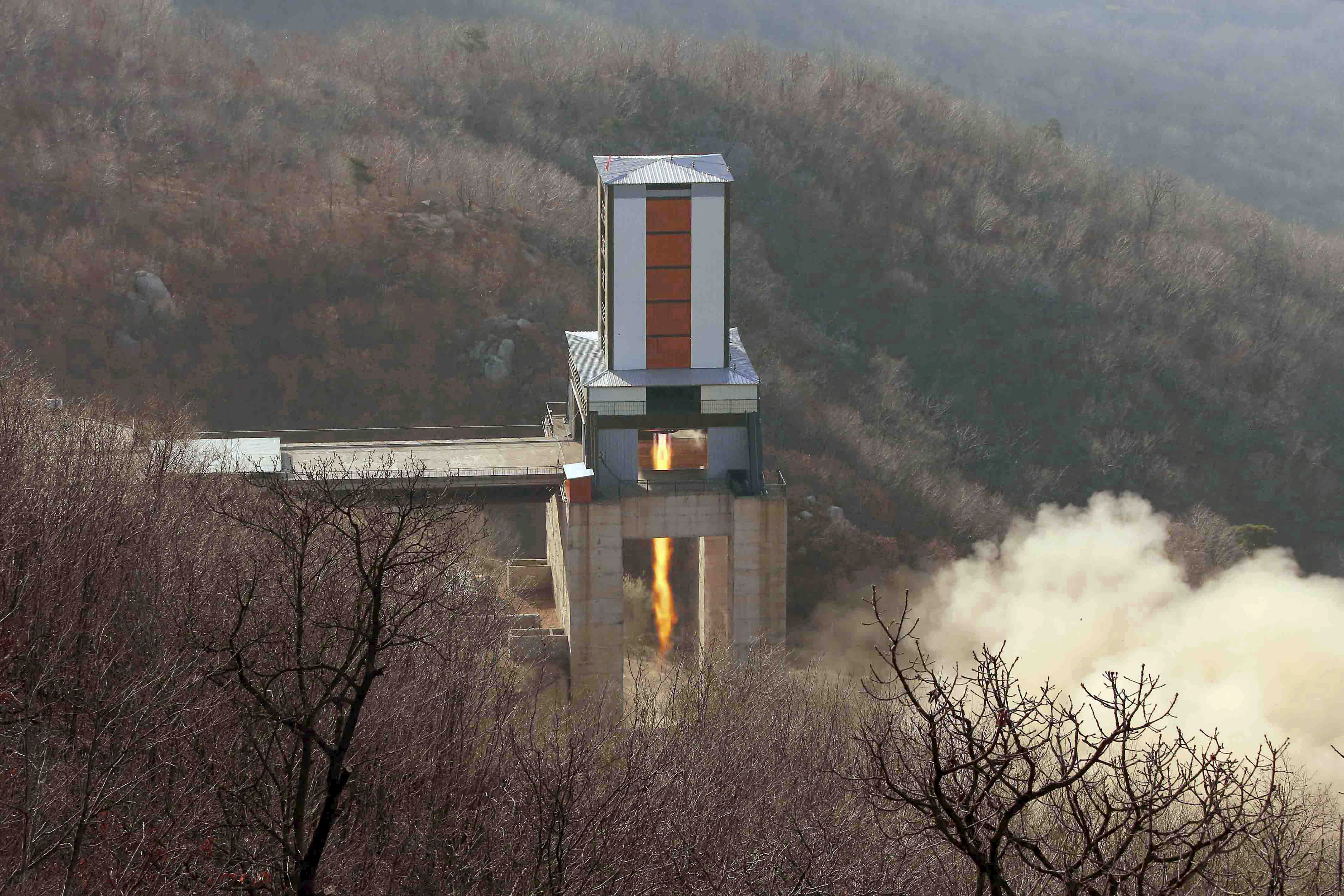
By James Pearson and Jack Kim
SEOUL (Reuters) – North Korea appeared to use a Chinese truck originally sold for hauling timber to transport and erect a ballistic missile that was successfully launched on Tuesday, highlighting the challenge of enforcing sanctions to curb its weapons program.
North Korea state television showed a large truck painted in military camouflage carrying the missile. It was identical to one a U.N. sanctions panel has said was “most likely” converted from a Chinese timber truck.
Since 2006, U.N. sanctions have banned the shipment of military hardware to North Korea. But control of equipment and vehicles that have “dual-use” military and civilian applications has been far less stringent.
The vehicle was imported from China and declared for civilian use by the North Korean foreign ministry, according to a 2013 report by the U.N. panel. Tuesday’s launch was the first time the truck had been seen in a military field operation in pictures published in state media.
China, North Korea’s largest trading partner and its sole major ally, is under increasing pressure from U.S. President Donald Trump, who has said Chinese efforts to rein in North Korea’s weapons programs have failed.
The truck had been previously on display at military parades in 2012 and in 2013 carrying what experts said appeared to be developmental models or mock-ups of North Korea’s intercontinental ballistic missiles.
Images on the North Korea’s state television showed soldiers working on the vehicle mounted with a missile, which was then erected and off-loaded ahead of the launch at a hillside location. Leader Kim Jong Un supervised the test.
The transporter-erector-launcher (TEL) is a vehicle designed to move a ballistic missile and stand it upright, allowing for a mobile system that makes surveillance difficult for spy satellites.
In its 2013 report, the U.N. panel of experts said the features of the vehicle in the 2012 parade exactly matched those of a vehicle sold by China’s Hubei Sanjiang Space Wanshan Special Vehicle Company.
DELIBERATE BREACH?
The company is a subsidiary of China Aerospace Science and Industry Corp, a state-owned company that makes the Shenzhou rocket as well as missiles.
A company manager reached by telephone declined to comment citing the sensitivity of the issue.
China submitted to the U.N. panel a copy of the end user certificate provided by the North stating that six of the vehicles were being imported for the purpose of transporting timber.
The panel said it “considers it most likely that the (North) deliberately breached” the certificate and converted the trucks into transporter-erector-launchers.
This year, North Korea used another Chinese-made truck model to tow submarine-launched ballistic missiles (SLBM) at a military parade on the 105th anniversary of the birth of state founder Kim Il Sung.
Last year, state media published photos showing Chinese-made trucks being used in a new North Korean mobile rocket artillery system.
Both vehicles showed the logo or had markings specific to the Chinese company Sinotruk.
A Sinotruk sales official said in April he was not aware the company’s trucks were used in the military parade.
North Korean state media has in the past released images of Sinotruk chassis and cabins related to construction or mining.
The Chinese Foreign Ministry said on Tuesday, after the launch, it was opposed to North Korea contravening rules laid out in U.N. Security council resolutions. China was working hard to resolve the issue and urged all sides to meet each other half way, it added.
(Writing by Jack Kim; Editing by Bill Tarrant)










